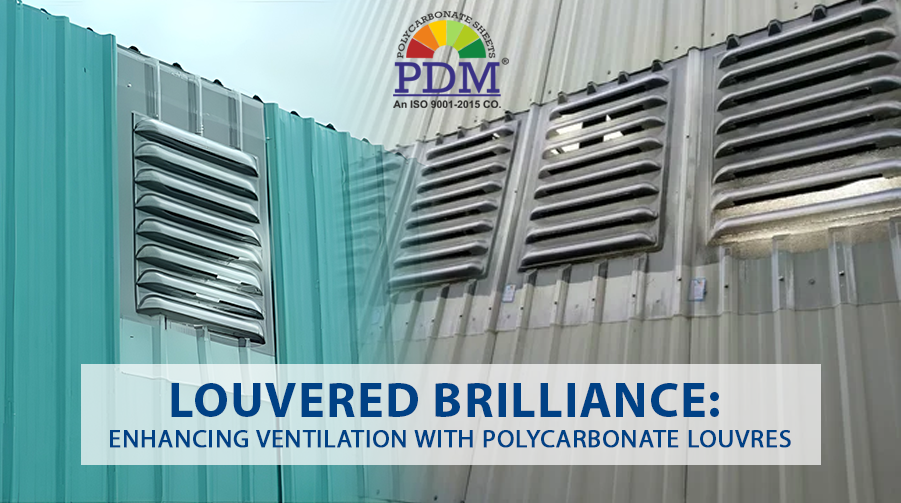Introduction
In the world of architecture and building design, the importance of proper ventilation cannot be overstated. Adequate airflow not only enhances comfort but also plays a crucial role in maintaining indoor air quality and regulating temperature. To begin with, polycarbonate louvers, with their blend of durability, versatility, and aesthetic appeal, have emerged as a popular solution for achieving efficient ventilation in various settings. In this blog post, we’ll explore the brilliance of polycarbonate louvers and how they can elevate your ventilation systems to new heights.
Understanding Polycarbonate Louvers
Louvers are ventilation components made from polycarbonate, a durable thermoplastic known for its exceptional strength, impact resistance, and optical clarity. These louvers feature a series of angled slats or fins arranged horizontally or vertically, allowing airflow while preventing the ingress of rain, debris, and pests. Available in a range of sizes, colors, and configurations. Polycarbonate louvers offer versatility and flexibility to suit various architectural styles and functional requirements.
Benefits of Polycarbonate Louvers
- Durability: Polycarbonate louvers are highly resistant to impact, weathering, and UV radiation, making them suitable for outdoor applications.
- Lightweight: Despite their strength, polycarbonate louvers are lightweight, reducing structural load and simplifying installation.
- Optical Clarity: High-quality polycarbonate louvers offer excellent transparency, allowing natural light to filter through while maintaining visibility.
- Customization: You can customize polycarbonate louvers in terms of size, shape, color, and configuration to meet specific design and functional requirements.
- Low Maintenance: These louvers require minimal maintenance, as they are easy to clean and resistant to corrosion, rust, and discoloration.
Applications of Polycarbonate Louvers
- Building Facades: Architects use PC louvers in building facades to provide ventilation while adding visual interest and architectural appeal.
- Window Systems: Louvered windows incorporating PC louvers allow for natural ventilation while enhancing security and privacy.
- Roof Ventilation: Louvered roof systems with PC louvers facilitate airflow in commercial and industrial buildings also improving indoor comfort and energy efficiency.
- Sun Control: You can angle PC louvers to provide shading and sun control, reducing solar heat gain and glare in interior spaces.
- Ventilation Shafts: Louvered ventilation shafts equipped with PC louvers ensure efficient airflow in underground parking garages, basements, and utility rooms.
Design Considerations
When incorporating polycarbonate louvers into your architectural design, several factors should be considered:
- Orientation: Proper orientation of louvers ensures optimal airflow while minimizing exposure to wind-driven rain and direct sunlight.
- Spacing: The spacing between louver slats affects airflow resistance and rain penetration. Balancing ventilation requirements with weather protection is essential.
- Materials: Choose high-quality polycarbonate materials with UV inhibitors for long-lasting performance and resistance to yellowing and degradation.
- Mounting: Select appropriate mounting methods and hardware to ensure secure attachment and structural integrity.
Conclusion
Polycarbonate louvers offer a winning combination of durability, versatility, and aesthetic appeal. An ideal choice for enhancing ventilation systems in various architectural applications. Whether you’re designing a modern facade, a sustainable building or an industrial facility. Polycarbonate louvers provide efficient airflow, natural light transmission, and weather protection. By understanding their benefits, applications, and design considerations. You can harness the brilliance of PC louvers to create ventilated spaces that are both functional and visually stunning.



